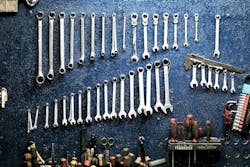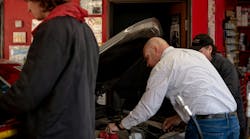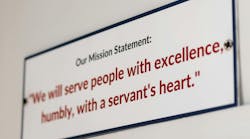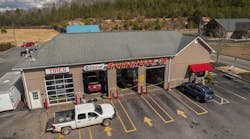For 2016, consider combining two common words into one and applying that term to all you do at the shop level. The words I want you to combine are, exact and attitude. The new word they make is “exactitude.”
Regulators are challenging the tread-depth measurements taken during tire inspections noting that imprecise measurements can lead to shops committing either fraud or negligence. If a technician understates the actual tread depth this can lead to the premature replacement of serviceable tires. This can easily be construed as overselling based on fraudulent or deceptive practices. Conversely, a shop may overstate the tires actual tread depth and fail to document a tire worn beyond replacement specifications. If this mismeasurement contributes to factors causing a collision or injury, the shop may be sued for negligence.
Today’s modern, high-tech engines are built to very exact tolerances. To help protect those engines manufacturers require very precise crankcase fill quantities. Too much or too little oil added during oil and filter change service can cause short or long-term damage to those engines. Just because the wrong amount of oil doesn’t ruin the engine in a few days doesn’t mean it won’t cause a misfire or damage the engine, engine seals or emissions controls over time. It can lead to premature component failure, emissions concerns and costly repairs. When a 2008 Toyota Corolla calls for 4.4 quarts (4.2 L) of oil with a filter change, installing either 4 quarts (3.8 L) or 5 quarts (4.7 L) just won’t do today. Transmissions are even more finicky. Whether it specifies 3.2 quarts (3 L) or 7.7 quarts (7.3 L) that’s exactly how much should be installed. Some states even require if your oil change service offers states “up to 5 quarts of oil” and you install the specified quantity of 4 quarts (3.8 L), then the customer is entitled to take a quart home with them — hardly convenient for the shop or customer when you are pumping bulk oils. How well are you communicating an oil change menu price for most cars when your shop sees one of the millions of Toyota Camrys with a 6.4 quart (6 L) capacity? How does your shop verify the tech’s accuracy when performing these services? Once again, charging for more fluid than actually installed can be considered fraud and installing too much or too little can be considered negligence.
When regulators spot these types of concerns, they start to look at your shop’s overall processes for accuracy. When a vehicle arrives at your shop with 58,894 miles on the odometer, do you simply jot 60,000 miles on the work order? How often are your shop’s torque wrenches calibrated and certified? Are your techs using tire air pressure gauges that are just inexpensive giveaway tools? How precise are your brake friction material or rotor and drum measuring processes?
In 2016, look for more cases where shops have been cited for such inaccuracies. Many shops have been forced to implement comprehensive training, purchase better tools and expensive equipment just to keep their business licenses and continue to operate. In order for shops to withstand such scrutiny, we must be exact in our measurements and documentation. Moreover, we must be exact in all shop processes, not just where we think we might get into trouble. That takes commitment and the right attitude. It has to come from the top down. Make sure your shop is precise, accurate and exact in everything they do. Measure it right, document it right and tell it right. That requires a high degree of exactitude.
JOE HENMUELLER has been a passionate advocate for the automotive aftermarket for nearly three decades. He currently serves as the president and COO of the Automotive Maintenance and Repair Association/Motorist Assurance Program where he helps guide automotive service providers and automotive aftermarket manufacturers and suppliers in developing industry standards that help strengthen the relationship between the motorist and the auto repair industry. He can be reached at 847.947.2650 or: [email protected]





